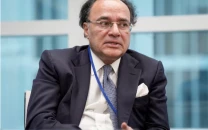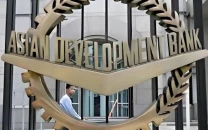Brain drain costs economy $4.2 billion annually
While it brings billions in remittances, real cost is not just economic, it's loss of ideas, innovation, leadership

Pakistan, a nation abundant in human capital and youthful energy, has long depended on its diaspora to bolster its economy through remittances. While these inflows provide essential financial relief, they come at a steep price: the loss of skilled professionals, intellectuals, and innovators, a phenomenon widely known as brain drain.
It is important to delve into the economic and social costs of brain drain in Pakistan, juxtaposed with the benefits of remittances, and calculate the real opportunity cost of losing talent to foreign economies.
Brain drain refers to the emigration of highly educated and skilled individuals from one country to another, typically from developing to developed nations. In Pakistan's case, this trend has accelerated in recent years due to economic instability, political uncertainty, and limited professional opportunities.
According to the Pakistan Institute of Development Economics (PIDE), Pakistan ranks third in South Asia and sixth globally in terms of human capital migration. Between 2022 and 2023 alone, there was a 26.6% increase in the emigration of highly qualified professionals.
Despite the loss of talent, Pakistan has seen a surge in remittances. In 2024-25, remittances reached $38.5 billion, marking a 25.2% year-on-year increase, offering much-needed cushion for the economy amid inflation, debt, and dwindling foreign reserves. These funds help support millions of families, stabilise the current account, boost foreign exchange reserves, and reduce reliance on external borrowing. The State Bank of Pakistan (SBP) has also introduced incentives to encourage formal remittance channels, reducing losses from informal systems like Hawala, which previously cost the country $3.7 billion annually.
Hidden cost: what Pakistan loses
While remittances are beneficial, they mask the real economic cost of losing skilled professionals. Pakistan invests heavily in education and training. When a doctor, engineer, or IT professional emigrates, the country loses years of subsidised education, public investment in infrastructure and training, and potential tax revenue from high-income earners. For example, training a single doctor in Pakistan can cost the state over $25,000. If 10,000 doctors emigrate annually, that's a $250 million loss in training investment alone. Skilled professionals are also the backbone of innovation. Their absence leads to slower technological advancement, reduced research output, and lower productivity in key sectors like healthcare, education, and IT.
High-income professionals contribute significantly to domestic consumption and investment. Their departure shrinks the middle and upper-middle class, reduces demand for housing, services, and consumer goods, and weakens the entrepreneurial ecosystem. Brain drain further affects healthcare, education, and governance. Fewer doctors and nurses in rural areas, a shortage of qualified teachers and researchers, and the loss of policy experts and civil servants are some of the consequences.
Quantifying opportunity cost
Let's attempt a basic economic model to estimate the opportunity cost of brain drain: assume 100,000 skilled professionals emigrate annually, earning an average income abroad of $60,000, compared to $12,000 if they stayed in Pakistan. Each sends back an average of $6,000 in remittances per year. That equates to $6 billion in total income abroad, $600 million in remittances sent home, and just $1.2 billion in income if they remained.
The net income lost to foreign economies is $4.8 billion, and the opportunity cost after accounting for remittances is $4.2 billion annually. This means Pakistan loses $4.2 billion annually in potential economic activity by exporting its skilled labour force.
Several push factors drive brain drain: low wages and limited career growth, political instability and poor governance, inadequate research funding and outdated infrastructure, and security concerns and lack of social mobility. A 2023 survey by Gallup Pakistan found that 62% of young professionals would prefer to work abroad if given the opportunity.
Can remittances replace talent?
While remittances provide short-term relief, they cannot replace the intellectual capital needed for innovation, the leadership required for institutional reform, and the entrepreneurial drive that fuels domestic job creation. Moreover, remittances are consumption-oriented, not investment-driven. They often go towards daily expenses, real estate, and social obligations, with very little channelled into productive sectors like manufacturing, tech, or education.
Policy recommendations
To mitigate brain drain and harness the full potential of its human capital, Pakistan must create economic opportunities by investing in startups, tech hubs, and industrial zones, and offering competitive salaries and career growth. The country must improve governance and security by ensuring the rule of law, transparency, and personal safety, and building trust in public institutions.
Strengthening higher education and R&D through increased funding and international collaborations is equally critical. Pakistan should also engage its diaspora by offering dual citizenship and investment incentives, and by creating platforms for knowledge transfer and remote collaboration. Promoting return migration through reverse brain drain programmes, re-entry grants, tax breaks, and housing support could further help reclaim lost talent.
Pakistan's brain drain is a paradox: while it brings in billions in remittances, it silently erodes the country's future potential. The real cost is not just economic – it's the loss of ideas, innovation, and leadership. To build a resilient and prosperous Pakistan, the country must shift from exporting talent to nurturing and retaining it. Only then can remittances become a complementnot a substitutefor sustainable development.
THE WRITER IS AN INTERNATIONAL ECONOMIST




















COMMENTS (1)
Comments are moderated and generally will be posted if they are on-topic and not abusive.
For more information, please see our Comments FAQ